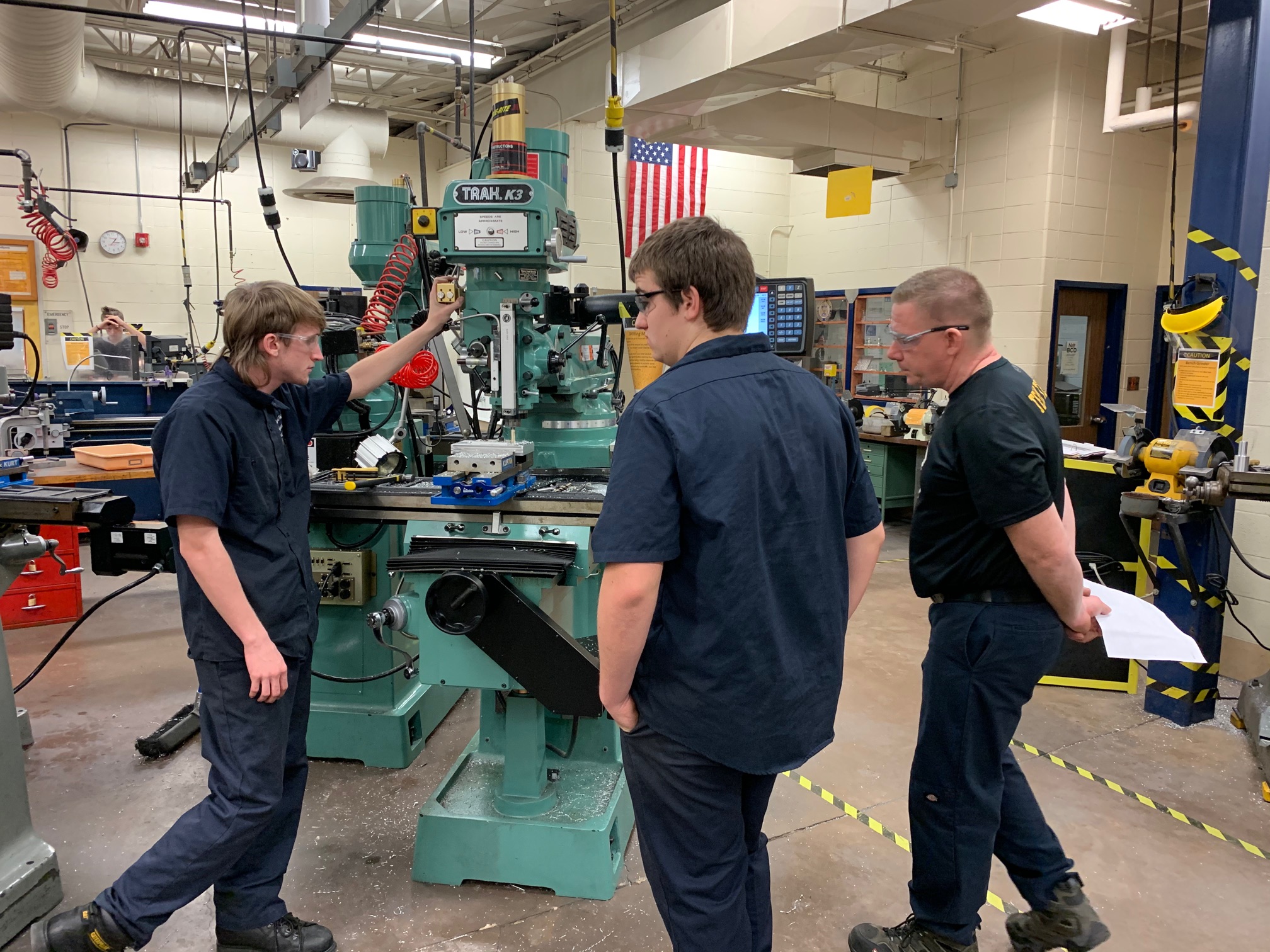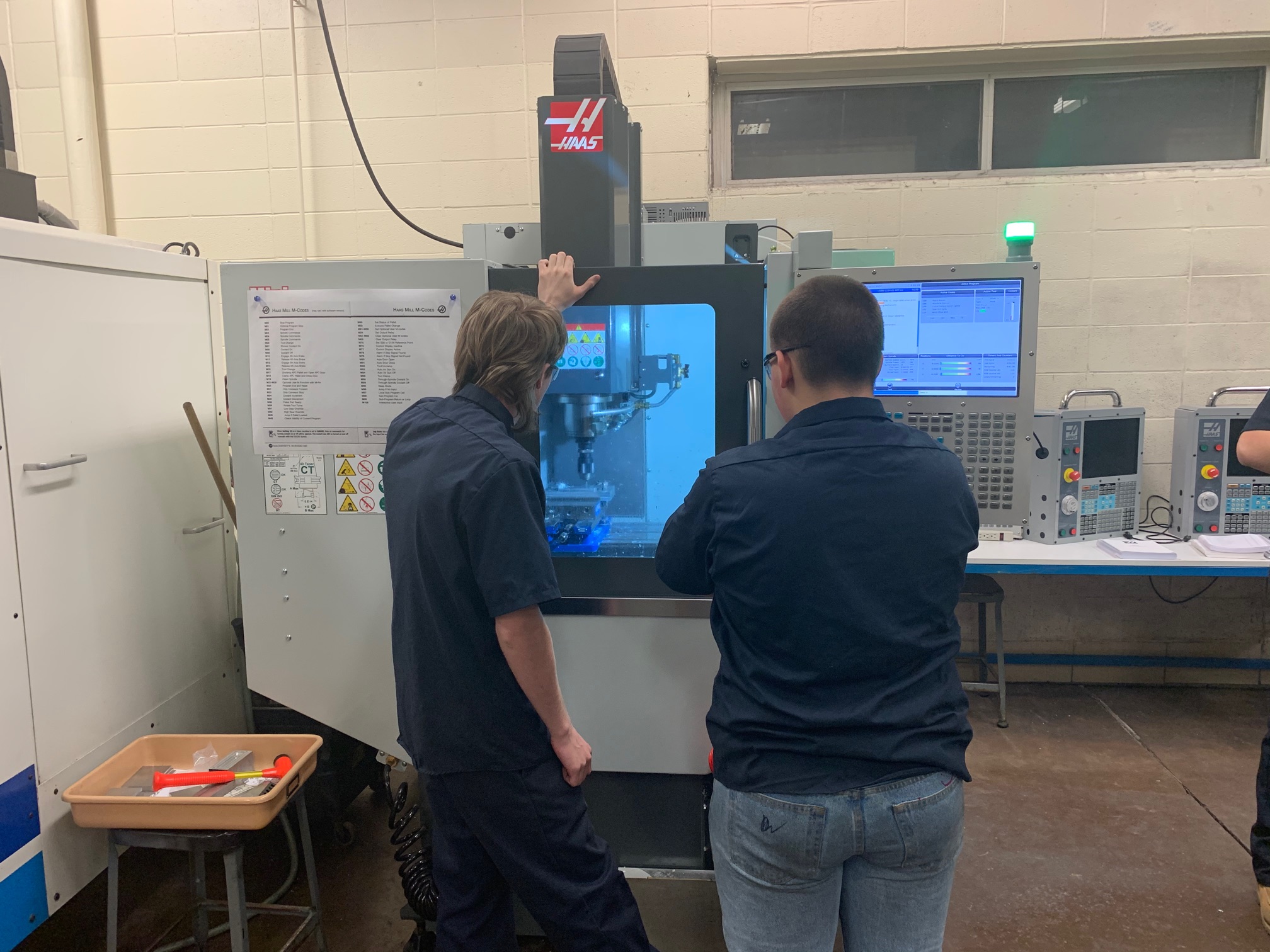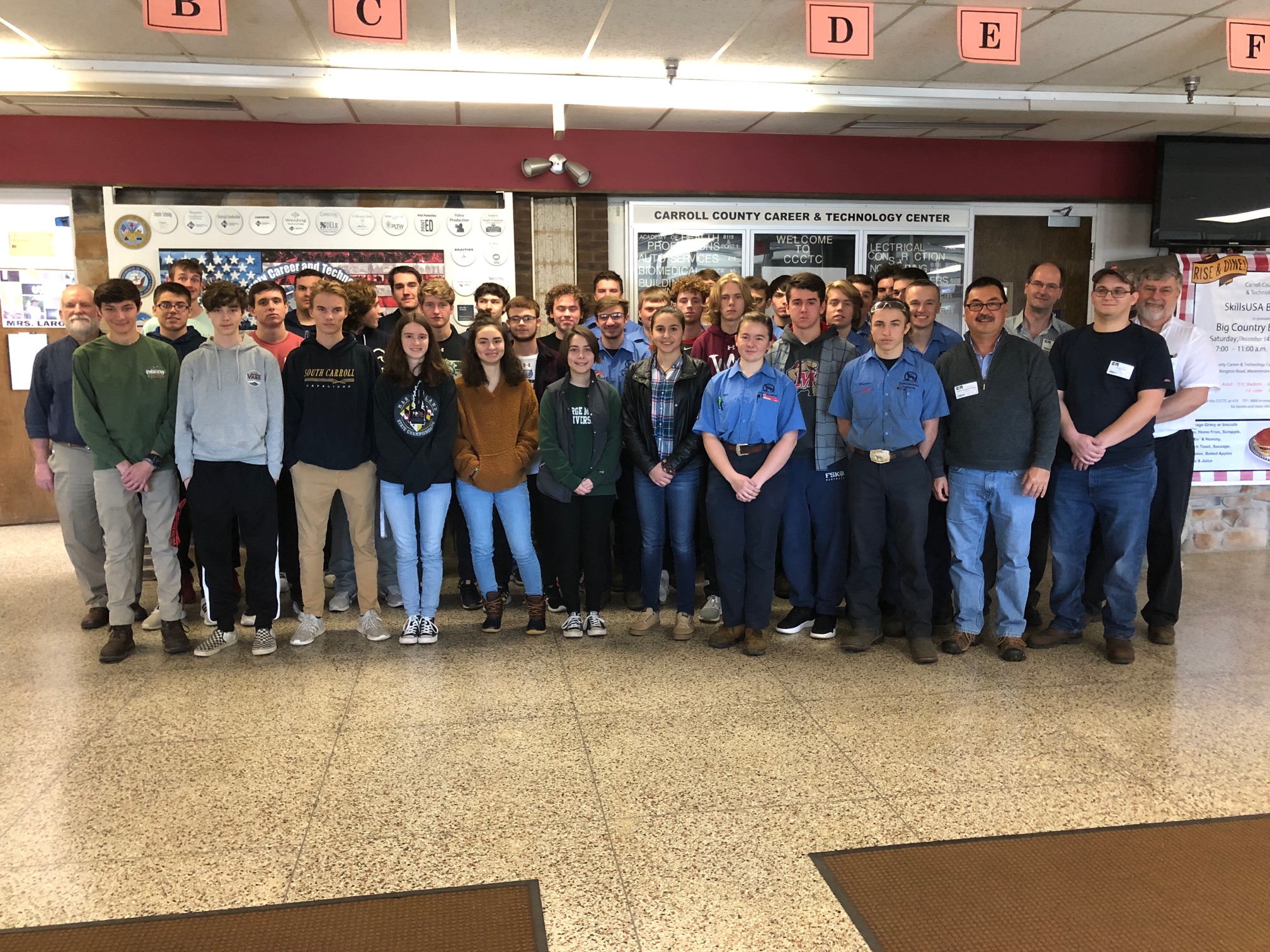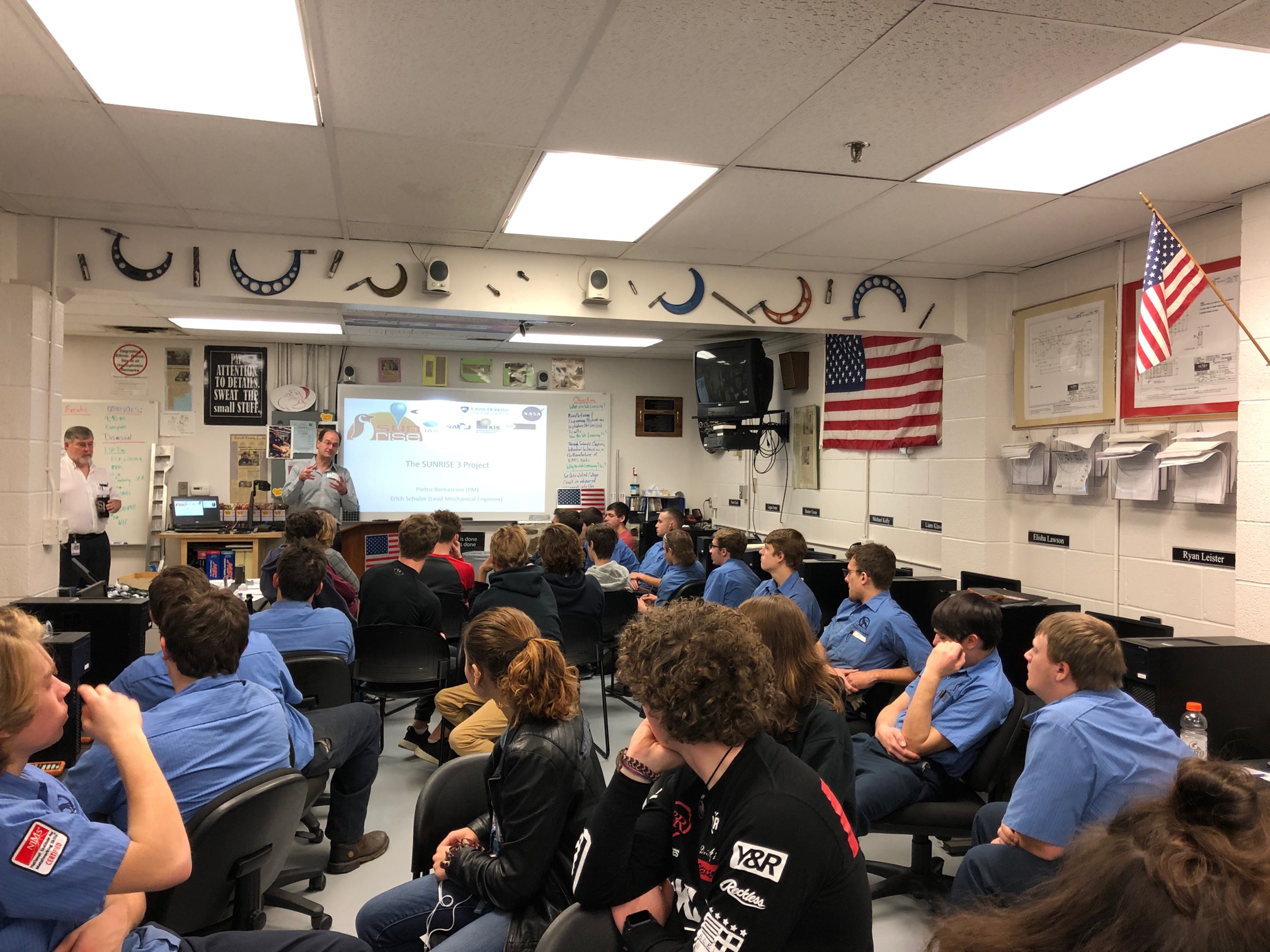Press Release
Tech Students Shoot for the Stars in Outreach Program Led by Johns Hopkins APL
It was four or five years ago, Tim Blizzard estimates, that he was enlisted to do a job for NASA. A technology teacher at Carroll County Career and Technology Center in Westminster, Maryland, Blizzard was assigned to make small, 1.7-pound, thin-walled frames to house electronics in a mock-up component of the International Space Station.
“It was just making potato chips,” Blizzard joked, but those little pieces started eating up a lot of his time. Blizzard said he spent every evening for weeks in his stuffy workshop, building parts late into the night, after spending his day teaching and working with students.
The experience left a scar on his memory, and it bled anew last fall when his friend Joseph Walters, a supervisor in APL’s Advanced Mechanical Fabrication area, approached him about collaborating on another NASA mission.
Walters reassured him, however, that it wasn’t just going to be him building the parts this time. In fact, Blizzard’s students were going to do most of it.

Credit: Johns Hopkins APL
The idea was to give students a rare chance to build space mission hardware in their own classrooms. As a longstanding member of the Community College of Baltimore County’s advisory board, Walters was always on the lookout for opportunities to give technology students real-world experience and develop skills they otherwise wouldn’t — or couldn’t — get.
As with most careers, a wide canyon exists between what technology students learn in school and what they’re asked to do in the workforce. For those interested in working at a place such as APL, where machinists build parts, instruments or entire spacecraft using some of the most high-end technology available, the necessary skills exceed most preparation students receive.
“These guys have to be able to program these machines, run them and ensure the products they build are good,” Walters said. And those products must meet hair-splittingly-exact specifications.
At first, Walters considered having students build simple parts for NASA’s Europa Clipper mission, which more than 200 APL staff members are currently working on. “We weren’t going to send them anything overly complicated,” he said with a slight chuckle. But because of contractual issues and the structural fidelity required for the spacecraft, he opted for something less restrictive — a grant APL has to build a gondola for SUNRISE 3, one of NASA’s balloon programs.

Credit: Johns Hopkins APL
It’s a straightforward mission, the third of its kind. A balloon travels for roughly a week from Sweden to northern Canada, carrying instruments that examine the structure and dynamics of the Sun’s magnetic fields.
After talking with Blizzard and another friend, Frederick Mohlhenrich, who directs the Computer-Aided Machining and High-Performance Manufacturing program at Harford Technical High School in Bel Air, Maryland, late last fall, the plans started falling into place. APL would provide the tools, materials and assistance with construction, while the teachers provided the facilities and around three dozen students.
In January, they all got to work.
APL machinists Kameron Stevenson and Hunter Turco — alumni of the two high schools — and Erich Schulze, the lead mechanical engineer for SUNRISE 3 at APL, volunteered to help. As of March, the students had built several dozen parts for the mission.
“The whole program worked out great,” Blizzard said. “The students were always asking what they’d work on that day. They were thrilled!”

Credit: Johns Hopkins APL
Stevenson, who spent his off-hours volunteering for the program at Harford Tech before heading into work for his evening shift, recalled the awe of one student after Stevenson showed him how to design and code for a 3D model in their computer-aided machining software. “I could hear him say under his breath, ‘This is awesome,’” Stevenson said.
The group planned to continue the collaboration through the spring as more components of the gondola were constructed. But with schools shut down because of the COVID-19 pandemic, they were forced to suspend the program.
Regardless, all group members agreed that future collaborations were in order, including Blizzard, who said he’d participate in this program again in a heartbeat.
“We are in a unique position at APL to be an example of what manufacturing can be,” Stevenson said. “And I think, being an educational facility, it’s great to take opportunities to go out and show where students can do things at a much higher level.”
